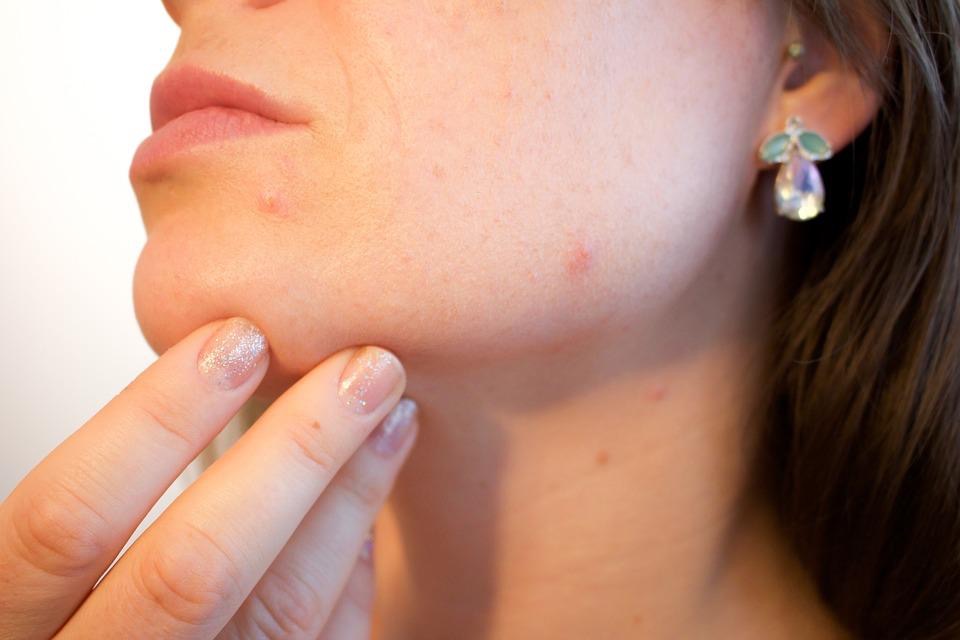Skin bumps of different types are quite common. Although they can cause concerns for some people, often they are harmless to your overall health. However, their presence on the face is unappealing and often causes discomfort. If you’ve ever dealt with skin bumps, you probably can’t help yourself from fretting about how to get rid of them. Majority of us are familiar with the most common types of face bumps like acne, blackheads, whiteheads, etc. But it is the uncommon ones that are the most frustrating! Looking at your face in the mirror and not understanding what caused the face bumps can be disconcerting.
Here is how you can get rid of face bumps.
Inflamed Acne
Ever noticed a bump on your face that has a white head and a red circle surrounding it? This is how inflamed acne looks like. It occurs because of clogged pores. Inflamed acne is usually painful and inflamed when touched and is often filled with pus. It is best not to touch it, or even worse, pop it. This can increase the inflammation and will most likely leave a blemish or spot after it goes away. People with oily skin are more likely to suffer from inflamed acne; therefore, it is best to treat your oily skin first to deal with inflamed acne in the long run. Use oil free products and cleansers to remove impurities from your skin. It is also recommended to use Skin Script Retinol Scrub to keep the skin clean on a daily basis to prevent the outbreak of acne in the first place.
Milia
Milia are another cause of face bumps that are harmless cysts under the skin. They look like whiteheads, but they cannot be removed like whiteheads, no matter how good of a cleanser you use. Usually they are found around eyes and on the forehead. There is no known specific cause of milia, but it is said that it occurs mostly on skin that has been damaged by the sun or due to continuous clogged pores. The easiest way to get rid of milia is to wait for it to disappear on its own naturally. However, if that doesn’t work you can book an appointment with a dermatologist who will remove them by making small incisions and taking out the contents in them.
Comedones
Comedones are the most common bumps that appear on the face. They are generally known as blackheads and whiteheads. The difference here is that blackheads are open comedones, while whiteheads are closed comedones. Both types of comedones are similar in the sense they both appear due to clogged pores with oil and dead skin. However, blackheads are a result of open pores—the impurities in the pores become oxidized and become black in color. On the other hand, whiteheads are a result of closed pores. Hence, the impurities are trapped inside. Comedones are not harmful to the skin but can cause some to feel unappealing and more self-conscious. To treat comedones, it is important to wash the face properly especially before sleeping. You can also use a cleanser with salicylic acid or benzoyl peroxide products to clean the pores of your skin.
Keratosis Pilaris
Keratosis Pilaris is quite common in adults. This occurs when small bumps appear on the skin, especially on your thighs and upper arms. However, they can also occur on the face. They might look like acne, but they are dead skin cells that are trapped in the hair follicles. There is no special treatment for keratosis pilaris, but by exfoliating the skin regularly, you can get rid of them. They pose no health hazard but look unappealing. There are various peels and exfoliators available at Skincare by Alana to help you treat Keratosis Pilaris.
Dermatosis Papulosa Nigra
Dermatosis Papulosa Nigra, or more commonly known as DPN, are bumps on face that are completely harmless and are most common in people with a darker complexion. They are usually genetic and are very small. Some people confuse them with moles, but they are not as they grow only on the epidermal cells. These little brown bumps grow in dozens on the face. They can be removed by cosmetic surgery, such as burning or cutting them off. A good way to protect against DPN is to wear sunscreen or sun protection to prevent them. If you have them already, using skincare products containing salicylic acid or glycolic acid can decrease their size, but complete elimination is not possible without laser treatment or cosmetic surgery.
Ingrown Hair
Skin bumps, caused by ingrown hair, often appear on the face and other parts of body as a result of hair removal. If the hair curls downward instead of growing up and out of the skin, then it can become trapped under the skin, causing a red bump. The bumps might fill up with pus, but that is not always the case. People with thick hair are more prone to getting skin bumps due to ingrown hair than people with thin hair. Ingrown hair can be prevented by washing the skin properly and using shaving cream before shaving off the hair. It is also important to use a sharp razor to ensure clean and sharp cuts. Laser treatments can also help you get rid of body hair, but it is usually a long process.
Most face bumps are completely harmless and can be treated quite easily. However, if you are concerned about skin bump, then you should consult your dermatologist before starting a home treatment. Scrubbing and exfoliating the skin regularly helps you cleanse the skin from impurities and toxins and keeps your pores clean. Please read each paragraph above if you want to find out the best preventative measures first! There is no need to worry about the bumps on your face when you can clear them away easily with some of the techniques above and skincare products available at https://www.skincarebyalana.com/.
Alana Mitchell is the founder and owner of two successful businesses — SkincarebyAlana.com and the Alana Mitchell brand. A labor of love, Alana Mitchell products are made with hand-selected ingredients, do what they’re supposed to, and help you fall in love with how you look and feel. Alana is happily married and has two sons. Her oldest is on the autism spectrum, and while she has had to learn to balance her personal and professional life, that hasn’t stopped her business or her family from growing together.




